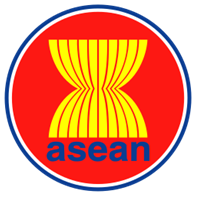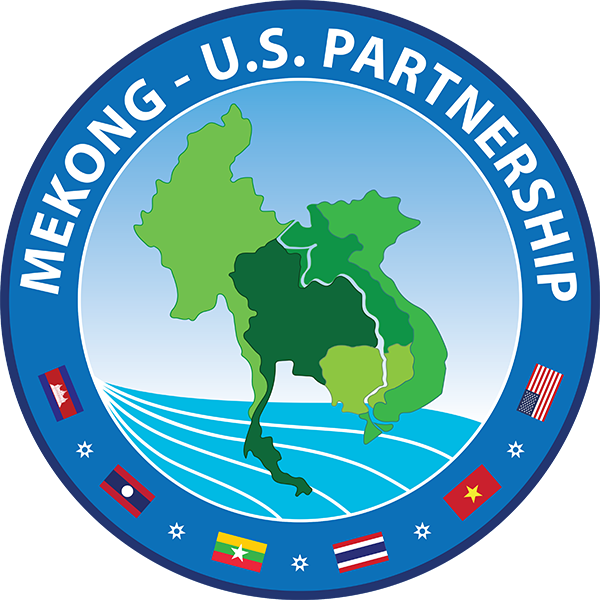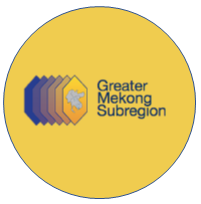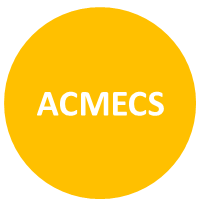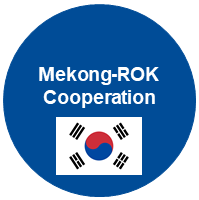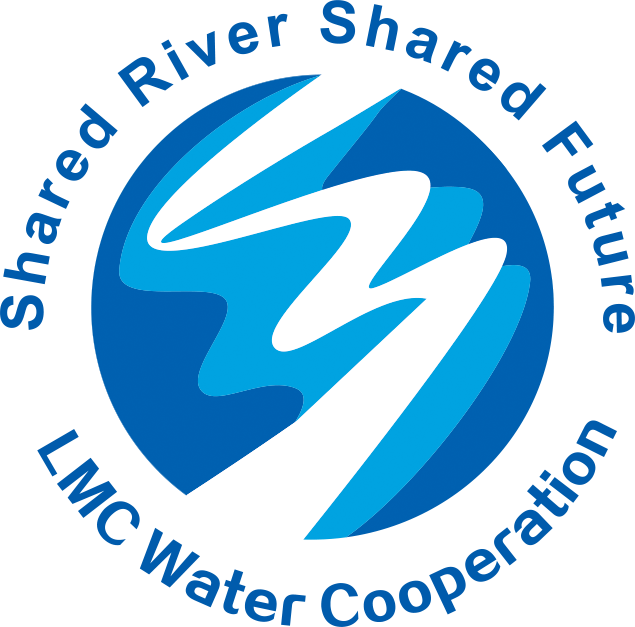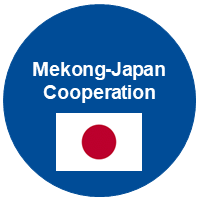Implemtation of Basin Development Strategy 2021 - 2030
This session levels of regional cooperation between the basin countries and their regional cooperation mechanisms are needed to produce the Outputs and achieve the Outcomes that are defined in this BDS. MRC will coordinate BDS implementation and needs the extensive involvement of all relevant actors in the basin. .
Implementing sustainable development opportunities
Identified and agreed development opportunities will be implemented at national and sub-national levels through national and local agencies and organisations, and also through the private sector, based on national regulatory frameworks and guidelines, as well as applicable regional procedures and guidelines, which involves meaningful public participation and consultations with civil society and affected communities. Joint investment projects between two or more countries will be implemented through coordinated national development or regional cost and benefit sharing agreements.
The basin countries’ water cooperation platforms (MRC and MLC Water), as well as ASEAN, GMS and other relevant actors, will continue to promote and help coordinate sustainable development opportunities, in particular joint investment projects and national projects of basin-wide significance. In this context, the MRCS will in time perform its core river basin advisory service function for technical queries and requests for support from national agencies, developers and others related to implementation of the BDS and the use of best practice guidelines.
Implementing strategic priorities
The BDS Outcomes in the five strategic priority areas will be addressed by the countries’ regional organizations, initiatives and programmes in collaboration with relevant counterpart organizations, such a national line and implementing agencies, scientific and advisory institutes, civil society organisations and others. The MRC will coordinate BDS implementation and deliver many of the BDS Outputs through its activities in the MRC Strategic Plan. The other regional cooperation mechanisms will contribute to BDS Outcomes through activities, projects and programmes in their water-related priority areas.
MRC Strategic Plan. Given its mandate, MRC is responsible for the overall coordination of implementation of the BDS 2021-2030, with support of the MRCS at the regional level and the NMC Secretariats at the national level. National Indicative Plans (NIPs). The basin countries are encouraged to prepare a NIP in 2020/2021 to implement the BDS at the national level, capturing the benefits from regional cooperation. The NIP is the primary channel by which basin perspectives, basin management functions, development opportunities, and regional guidance and tools are promoted and mainstreamed into the five-year national socio-economic and sector planning and annual work planning of relevant national agencies.
Since the NIP has to align with national planning and budgetary cycles, a rolling NIP will be prepared, with different timeframes for different NIP components, and with a flexible formulation process. The NIPs will include:
- Current significant planned infrastructure projects of basin-wide significance in water, energy and related sectors, which provide an opportunity for early engagement of the countries’ water cooperation platforms (MRC, MLC Water) in the preparation of such projects with a view to enhancing project benefits and sustainable development outcomes, which will facilitate project consultation and approval processes;
- New or updated joint investment projects and national projects of basin-wide significance, which are the primary means for increasing and sharing the benefits from developing the Mekong’s water resources. These projects are significant infrastructure investments and associated measures in water resources development and management, primarily those that will be identified in the proactive regional planning. The regional water cooperation platforms will support the preparation of such projects, as described in Section 6.1;
- Transboundary pilot projects and joint non-infrastructure projects to share experience, improve knowledge, management, systems and cooperation;
- Activities for facilitating uptake at the national level of basin and regional sector strategies, technical guidelines, major study/report recommendations, basin monitoring (national/decentralized) and capacity building and knowledge sharing in the national planning and decision-systems, with a view to increasing the benefits of national plans and projects and reducing the regional costs. For the implementation of the MRC Strategic Plan, the national contributions are indicated in the results chain with Outputs, deliverables and activities (Section 8.2 to 8.6).
- A summary of national activities associated with the water-related activities of the regional cooperation mechanisms (MLC, ASEAN, GMS etc.), and national activities that contribute to BDS Outputs supported by development partners and international financing institutions;
Plans of other regional cooperation mechanisms. The water-related activities of other relevant regional organizations, initiatives and programmes generally have a broader scope than this BDS (which predominantly focuses on transboundary Mekong water resources management), but their implementation could contribute to BDS Outcomes and some of the Outputs that have a broader scope . Some of these regional cooperation mechanisms will be targeted at the achievement of BDS Outputs through cooperation arrangements with the MRC and MLC Water, ASEAN and GMS. The Outputs (and key deliverables) of the water-related activities of regional cooperation mechanisms will be tracked through MRC’s organisational M&E system to support the evaluation of BDS Outcomes.
Engagement of broader stakeholders
Extensive participation. During the preparation of this Strategy, wide and meaningful consultations were held at the national and regional level with broader stakeholders, including regional organizations and initiatives, development partners, universities, private sector, civil society organisations, and others.
Direct involvement in BDS implementation. Non-governmental stakeholders (including academia, private sector entities, CSOs), can provide inputs to specific activities that will be implemented to produce the BDS Outputs, either as a member of the implementing team or as a participant in activity-related workshops and consultation meetings.
Regular stakeholder forums. While the MRC Regional Stakeholder Forum will continue, efforts are needed to further streamline, synergize and synchronize other Mekong related stakeholder forums in order to maximize stakeholder inputs, reduce stakeholder engagement fatigue, and achieve common objectives of sustainable development of the Mekong. This Strategy promotes the ‘institutionalization’ of a Multiple Stakeholder Platform with the mandate to undertake regular stakeholder reviews of the implementation of the Strategy at the regional and national levels.
Targeted stakeholder meetings on key issues of concern. This Strategy promotes the proactive organization by the water cooperation platforms of targeted meetings with specific stakeholder groups (e.g. CSOs, private sector, media) whenever needed on major issues of concern, with a view to sharing information, discussing perspectives and viewpoints, and working towards consensus. To support such meetings, the web portals of the water cooperation platforms need to be modernized to function as a web-based decision support system (DSS) where stakeholders can follow changes in land and water conditions in the basin, integrate and visualize a wide range of data, and make changes in development scenarios and assess the impact of these changes on selected indicators. These meetings could also be brought under the proposed Multiple Stakeholder Platform which would streamline, synergize and synchronize Mekong related stakeholder forums.
Proactive unbiased information providers. All of the above will strengthen the role of the countries’ water cooperation platforms as honest basin managers on which people can rely on to provide even-handed information and advice on technical aspects and the conditions in the basin, and to pro-actively inform the people through web portals, social media, newspapers, and other media. This will also require the normalisation of greater and timely public disclosure and increased transparency about further use and development of public assets.
Implemtation of the MRC Strategic Plan 2021 - 2025
This session describes the MRC’s institutional arrangements for implementing the MRC SP, the roles of the MRC’s key stakeholders in the implementation of the Plan, the multi-year work planning for implementation of the activity chains in Chapter 8, and the financial and human resource requirements and arrangements for the Plan. It also describes how key risks to Plan will be managed and how the Plan implementation will be monitored and evaluated.
Institutional arrangements for the MRC Strategic Plan implementation
Summit of Heads of Government The four-yearly MRC Summit of Heads of Government, first organised in 2010, is the highest political forum of the MRC whereby outcomes of cooperation are assessed, and directions set for the following four years. The fourth Summit in 2022 – towards the mid-point in the implementation of this MRC SP - is an important milestone for the MRC to assess the direction of its development.
Council of Ministers As the highest decision-making body in the MRC, the Council approves the MRC SP and makes decisions on all policy-related matters concerning its implementation, including organisational policies, basin-wide strategies and plans, strategic cooperation partnerships, and resolution of differences. The Council provides strategic guidance on priority setting, including by approving the multi-year work plans (including annual budgets) based on endorsement from the Joint Committee and the recommendation of the Budget Committee.
In what is a critical transition phase for MRC in a changing institutional landscape, the Council also oversees high-level risks relating to the implementation of the BDS, including national uptake of regional Outputs, and the organisational development of the MRC, including the transition to national implementation of core river basin management functions and increasing cooperation with MLC Water for the purposes of integrated management of the whole Mekong River system. It helps in this regard that the MRC Council members are the same ministers for four LMB countries providing policy direction in Ministerial Meetings of MLC Water.
Joint Committee In coordinating the implementation of the Council’s decisions, the Joint Committee steers the implementation of this MRC SP.
The Joint Committee establishes and is assisted in its work by task forces, working groups, expert groups or similar arrangements that provide technical input and advice on certain institutional, technical and policy related issues. The CEO works closely with Committee members in this regard. Most of the JC members are also members of the Joint Working Group (JWG), which is the coordination and decision-making body of MLC Water.
National Mekong Committees of line/implementing agencies In each Member Country, line or implementing agencies in water and related sectors, as well as those agencies relevant to Mekong cooperation (such as planning and investment and foreign affairs), are members of a National Mekong Committee (NMC), supported by a Secretariat (NMCS) which performs cross-sectoral, cross-agency coordination, communication and reporting. The NMCSs are attached to the ministry responsible for water resources management and/or environmental management.
MRC Secretariat (MRCS) The MRCS is the operational arm of the MRC and performs technical, facilitating and administrative functions under the management of a Chief Executive Officer (CEO). It facilitates regional meetings of the Member Countries and provides technical advice on joint planning, coordination and cooperation. It also works closely with the four countries’ coordinating bodies, the NMCs, partners and stakeholders.
Development Partners (DPs) While Member Countries increase significantly their financial contribution to USD 25 million for the MRC SP 2021-2025, well in line with their commitment in the Roadmap, a significant percentage of funding for the MRC would still be needed from MRC's Development Partners.
Gender Action Plan 2021-2025
The BDS recognizes that sustainable development in the basin depends on equitable access and utilization of resources, social equity, the resilience of the basin population and the continued function of the Mekong ecosystem, and that economic development as well as targeted policies and actions are necessary to address inequity. The strategy therefore recognizes a “gender and vulnerability” approach to account for intersectional inequity, the need to internalise the costs of externalities, and the different dimensions of vulnerability.
The defined Outcomes and Outputs under BDS Strategic Priority 2 address the considerable gender and vulnerability related data gaps and aspects of basin water, food and energy security. The BDS also calls for specific measures that directly aim at the reduction of inequity and vulnerability as well as externalities, such as gender and vulnerability and local expertise in the proposed Joint Basin Expert Groups. ASEAN is also actively supporting member states in addressing gender issues that will contribute to the achievement of BDS Outcomes and Outputs.
Gender Action Plan (GAP) for 2021-2025 has been prepared to consolidate those MRC activities of the MRC Strategic Plan with direct reference to gender and vulnerability (G&V) aspects and provides more detailed descriptions of the planned activities needing to factor in the G&V approach.”
External stakeholder engagement
Key external stakeholders and their interests have been identified and the purpose of engagement for this MRC SP period described as bellow.
Table 9.1: Interests and roles of external stakeholders in supporting MRC SP implementation
Stakeholder
China
Interest of stakeholder: Regional cooperation for socio-economic development, economic integration and political stability, regional reputation
Purpose of engagement by the MRC: Further increasing policy dialogue, data and information sharing and technical exchanges to facilitate basin planning and management, including flood and drought management.
Securing greater substantive involvement in the 5-yearly updating of the State of Basin report.
Myanmar
Interest of stakeholder: Knowledge sharing on basin development and management Regional cooperation
Purpose of engagement by the MRC: Strengthening dialogue and technical exchanges.
MLC Water
Interest of stakeholder:
Water resources and green development
IWRM and climate change adaptation
Water sector production capacity Rural areas, water conservancy and livelihood improvement
Sustainable hydropower development and energy security
Transboundary river cooperation and information sharing Coordination with other areas
Purpose of engagement by the MRC:
Implementation of current MoU
Dialogue to explore opportunities to optimize the basin-wide approach in water and related resources development and management
Setting up joint basin expert groups for regional proactive planning, coordinated basin management operations, and water-related monitoring and DSS facilities
Collaboration on common projects and activities, including the development of the Multiple Stakeholder Platform, strengthening flood and drought management capacity, enhancing data sharing and developing a mainstream early warning system, and reviewing cooperation mechanisms and modalities for Mekong transboundary river management
ASEAN
Interest of stakeholder:
Regional cooperation and integration
IWRM Country strategy guideline and indicator framework implementation
Water quality and sanitation Water-related disasters
Climate change mitigation, adaptation and resilience
Purpose of engagement by the MRC:
Implementation of current MoU
Making contributions to BDS Outcomes and Outputs, particularly in relation to environment, social improvements and water security
Collaboration on common projects, including on water-related disasters and water quality
Key MRC strategies, guidelines and perspectives are discussed and supported at relevant ASEAN forums and agendas
Ensuring debates about critical, water and related basin-wide opportunities and issues are framed appropriately and influence relevant decision-making processes, including through a standing ASEAN-MRC Water Security Forum
Other partners and multilateral agencies (UN, World Bank, ADB)
Interest of stakeholder:
Raising living standards and securing socio-economic benefits and regional political stability
Sustainable water resources development and management
International cooperation
Purpose of engagement by the MRC:
Greater awareness and strategic and water diplomacy support among senior officials for alignment/harmonization of approaches in line with MRC assessments, strategies and recommended development pathways
Technical and financial support
Making contributions to BDS Outcomes and Outputs
Promotion of sharing experiences with other international river basins
Private sector entities
Interest of stakeholder:
Participation in national development activities
Confidence in national and regional governance processes for beneficial investments
Purpose of engagement by the MRC:
Preparation and implementation of BDS sustainable development opportunities in line with national and regional frameworks (procedures, strategies and guidelines)
Uptake and use of relevant MRC Procedures, strategies, guidelines and tools
Civil society organizations, communities
Interest of stakeholder: Securing socio- economic benefits and avoiding negative impacts from water-related developments
Purpose of engagement by the MRC:
Promotion of common understanding of the evidence base relating to the basin
Participation in the basin planning and management process to raise their interests, concerns and policy recommendations
Represent the interests of the vulnerable groups, women and children, and the environment
Research institutes and academia
Interest of stakeholder: Bringing in new perspectives to policies and development strategies to ensure equitable distribution of wealth and opportunity
Purpose of engagement by the MRC:
Promotion of common understanding of the evidence base relating to the basin
Collaboration in preparing and promoting MRC assessments and tools development
Media
Interest of stakeholder: Raising awareness
Purpose of engagement by the MRC:
Promotion of greater understanding of the role and benefits of MRC
Clarification of issues from scientific perspectives
Multi-year work planning
This 5-year MRC SP serves as a macro-level planning tool for the MRC at the regional level. It will be operationalised through rolling two-year work plans, which show continuation of work, especially activities that run over several years. Multi-year work planning will also help national line/implementing agencies integrating MRC SP activities in their workplan for better national implementation. The budget for the rolling two-year workplans can be revised every year or more frequently, as required.
